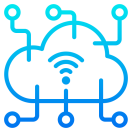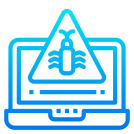FOR400 Fundamentals of Network Forensics

Course Overview
FOR400 - Fundamentals of Network Forensics expands on acquired networking knowledge and extends into the computer forensic mindset. Students will learn about common devices used in computer networks and where useful data may reside. Students will also learn how to collect that data for analysis using hacker methodology.
Additionally, the course covers information related to common exploits involved in Windows server systems and common virus exploits. Students will learn how to recognize exploit traffic, and the difference between attacks and poor network configuration
Objectives
hProvide a solid understanding of what is considered valuable digital media used as forensic evidence for an investigation, including how data is stored, retrieved and analyzed
Target Audience
hProfessionals looking to either broaden their cyber skills or begin developing a skill set within the network defense community
Estimated Course Length: 24 hours
Day 1
Day 1 Students will learn to understand and demonstrate the use of a standard methodology for exploitation, the concepts of various software threats and the techniques expected of a professional hacker.
- Hacker mindset and steps of an attack
- Hacker techniques
- Tools used for exploitation
- Packet capturing and analysis
- Tools used for network analysis
Day 2
Students will identify protocols helpful when performing network forensics. Students will gain an understanding of filters and how they can help identify specific packets of interest. Students will setup Ethernet ports for capturing data and analyze traffic using Snort to identify malicious activity. The labs challenge students to use a variety of control structures like sequence, selection, and repetition
- Filtering traffic and protocol analysis
- Comparing file hashes to identify malicious files
- Parsing network traffic to identify malicious files and attacker activity
- Network devices, packet capturing in a switched environment .
- Configuring Ethernet ports on an IDS
- Advantages of internal and external IDS placement
- Running Snort
- Examining Snort rules and using Snort to analyze packet capture files
Day 3
Students will learn how to edit Snort configuration files to use local rules, edit rules files and write custom rules to detect malicious activity, command shells and malware. Students analyze traffic using Snort as an intrusion detection system. Students will learn to recognize anomalous activity in web, FTP authentication and access logs in Linux and Windows.
- Editing Snort configuration files
- Editing Snort rules files
- Writing custom Snort rules to detect malicious activity
- Analyzing traffic using Snort as an IDS
- Recognizing anomalous activity in Linux and Windows logs
Day 4
Students will learn how to recognize anomalous activity in Linux and Windows. Student will understand how to detect evidence of an attack using incident response toolkits as well as native tools to view process lists, established connections, scheduled jobs, and account activity.
- Analyzing Windows incident response data
- Analyzing Linux incident response data
- Using visualization tools to recognize anomalous communications
- Correlating data from established connections processes and traffic
- Using Sawmill to analyze Snort logs
- Recognizing internal and external threats
Day 5
Students will demonstrate the ability to identify attacker IP addresses, exfiltrated data, malware, method of compromise, accounts used, and document observed activity in an executive summary and timeline of events.
- Students will be required to assign attribution to an attack and final exercise
Course Overview
FOR400 - Fundamentals of Network Forensics expands on acquired networking knowledge and extends into the computer forensic mindset. Students will learn about common devices used in computer networks and where useful data may reside. Students will also learn how to collect that data for analysis using hacker methodology.
Additionally, the course covers information related to common exploits involved in Windows server systems and common virus exploits. Students will learn how to recognize exploit traffic, and the difference between attacks and poor network configuration
Objectives
hProvide a solid understanding of what is considered valuable digital media used as forensic evidence for an investigation, including how data is stored, retrieved and analyzed
Target Audience
hProfessionals looking to either broaden their cyber skills or begin developing a skill set within the network defense community
Estimated Course Length: 24 hours
Day 1
Day 1 Students will learn to understand and demonstrate the use of a standard methodology for exploitation, the concepts of various software threats and the techniques expected of a professional hacker.
- Hacker mindset and steps of an attack
- Hacker techniques
- Tools used for exploitation
- Packet capturing and analysis
- Tools used for network analysis
Day 2
Students will identify protocols helpful when performing network forensics. Students will gain an understanding of filters and how they can help identify specific packets of interest. Students will setup Ethernet ports for capturing data and analyze traffic using Snort to identify malicious activity. The labs challenge students to use a variety of control structures like sequence, selection, and repetition
- Filtering traffic and protocol analysis
- Comparing file hashes to identify malicious files
- Parsing network traffic to identify malicious files and attacker activity
- Network devices, packet capturing in a switched environment .
- Configuring Ethernet ports on an IDS
- Advantages of internal and external IDS placement
- Running Snort
- Examining Snort rules and using Snort to analyze packet capture files
Day 3
Students will learn how to edit Snort configuration files to use local rules, edit rules files and write custom rules to detect malicious activity, command shells and malware. Students analyze traffic using Snort as an intrusion detection system. Students will learn to recognize anomalous activity in web, FTP authentication and access logs in Linux and Windows.
- Editing Snort configuration files
- Editing Snort rules files
- Writing custom Snort rules to detect malicious activity
- Analyzing traffic using Snort as an IDS
- Recognizing anomalous activity in Linux and Windows logs
Day 4
Students will learn how to recognize anomalous activity in Linux and Windows. Student will understand how to detect evidence of an attack using incident response toolkits as well as native tools to view process lists, established connections, scheduled jobs, and account activity.
- Analyzing Windows incident response data
- Analyzing Linux incident response data
- Using visualization tools to recognize anomalous communications
- Correlating data from established connections processes and traffic
- Using Sawmill to analyze Snort logs
- Recognizing internal and external threats
Day 5
Students will demonstrate the ability to identify attacker IP addresses, exfiltrated data, malware, method of compromise, accounts used, and document observed activity in an executive summary and timeline of events.
- Students will be required to assign attribution to an attack and final exercise


















